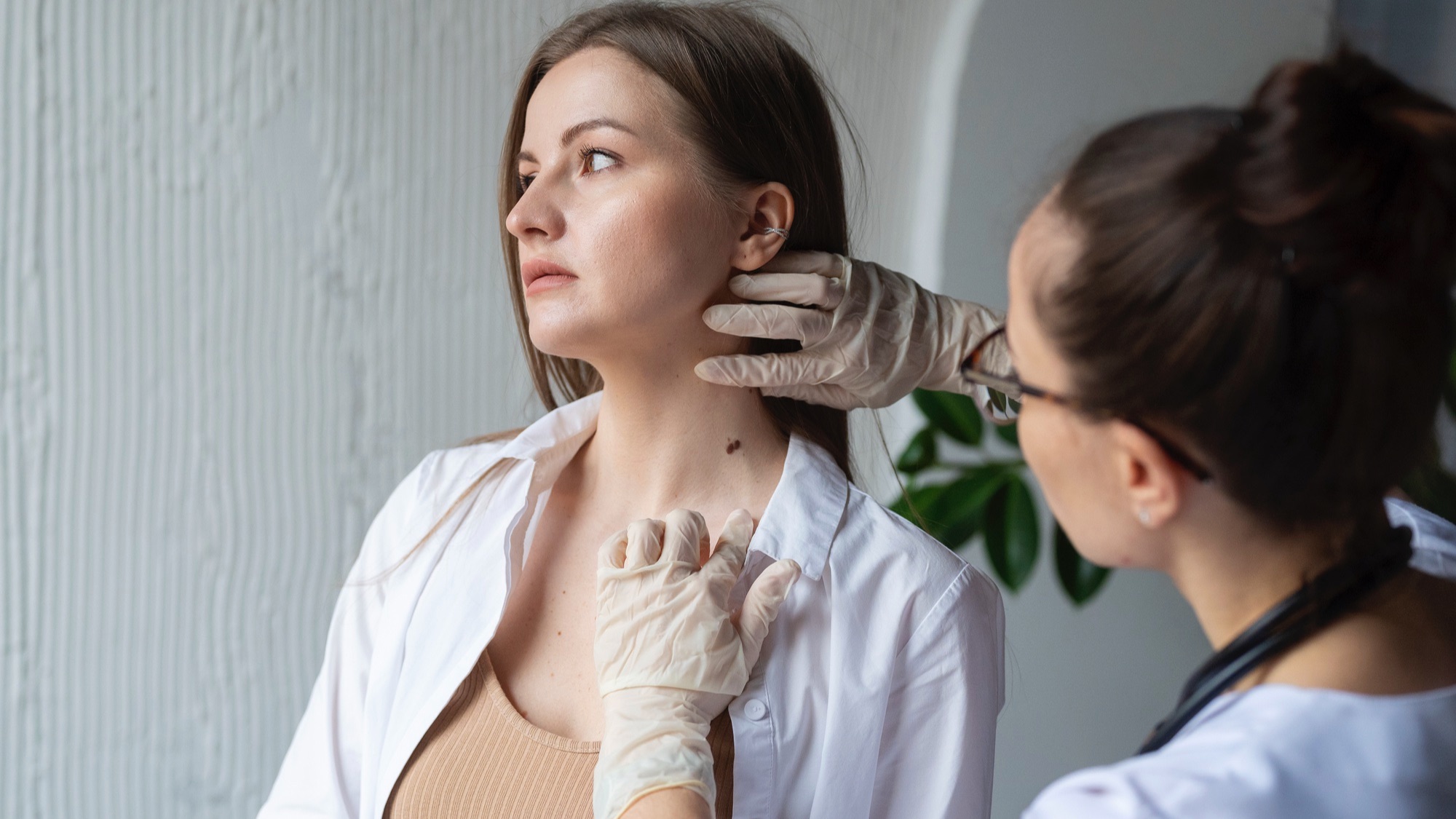May is Melanoma Awareness Month
May 15, 2023
Did you know that May is Melanoma awareness month? This time provides an opportunity to recognize the significant impact that melanoma has on patients and their families. As dermatologists, melanoma is a diagnosis that we absolutely do not want to miss because early detection increases the chances of successful treatment and better outcomes for patients. If melanoma is not caught early, it can spread to other parts of the body and become much more difficult to treat.
So what is melanoma?
Melanoma is a type of skin cancer that is caused by the uncontrolled growth of pigment-producing cells in the skin called melanocytes. Melanomas typically are dark in color (dark brown or black), but not always. While it can occur in all ages, it's fairly uncommon in children, but is actually the #1 cancer affecting young adults between the ages of 25-29. In 2023, there are predicted to be nearly 100,000 cases of invasive melanomas in the U.S. alone with 7650 deaths.
What can you do to protect your skin from melanoma?
Protecting your skin from the sun is crucial in preventing melanoma, as UV radiation from the sun is the leading cause of the majority of melanomas. Avoiding tanning beds altogether is important in protecting your skin from melanoma and you’d be surprised to know that even a single episode of sunburn before 18 significantly increases the risk of developing melanoma later in life!
What should you look for to identify melanomas?
As dermatologists, we recommend the ABCDEs of melanomas to help patients identify suspicious lesions:-
A- asymmetry, moles should be fairly symmetric where you can draw a line down the middle and fold onto itself; anything irregular deserves a closer look
B- border irregularities, you should be able to clearly draw a line around the mole and know where it starts and stops (no smudging)
C- color variations, moles should be fairly uniform in their coloration, even if dark; a mix of blues, reds, and whites are concerning
D- diameter > a pencil eraser (about 5mm) gives us a pause and need for a closer look
E- evolving, any mole that is new or changing deserves a closer look
Make sure to have any suspicious mole examined by a board-certified dermatologist. A simple in-office exam may be all that is needed, or the doctor may conduct a skin biopsy to confirm the diagnosis.
Fortunately, with early detection, the 5-year survival rate can be as high as 99% for melanomas confirmed to the skin and patients only need a surgical excision to remove the cancer. However, as the melanoma grows deeper into the skin and other parts of the body, additional treatments may be needed, such as a lymph node biopsy or imaging studies.
By taking simple steps to protect your skin and being vigilant about changes in moles or spots, you can reduce your risk of developing melanoma, or catch it early when treatment is most effective.
For more great info on melanomas, be sure to check out my latest podcast episode, 'May is Melanoma Awareness Month.'
A new podcast is released every Monday.






